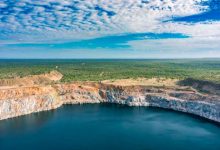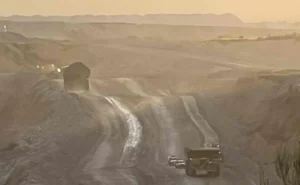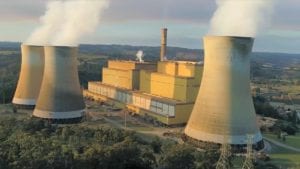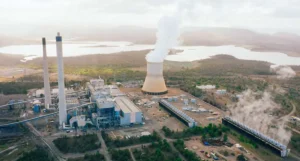Meeting Australia’s need for more energy storage capacity could also help answer the question of what to do with decommissioned coal mines – at least according to the reported plans of billionaire media mogul Kerry Stokes.
According to independent energy news outlet Boiling Cold, the Kerry Stokes founded Seven Group Holdings has floated the idea that the Muja coal mine in Collie in Western Australia could be converted into a pumped hydro energy storage facility.
It was reported that Seven Group Holdings has approached the Western Australian government about a potential plan for the creation of a pumped hydro facility at the Muja mine site could help mitigate the costs of the mine’s rehabilitation, while providing a boost to the state’s energy system.
The Muja coal mine is currently operated by the troubled Griffin Coal, which has struggled to keep the mine profitable and was recently issued a breach notice by the owners of the Bluewaters Power station for a failure to fulfil coal supply contracts.
The mine is approaching the end of its life, and the state government could be left with the bill of rehabilitating the site – a cost that could exceed more than $1 billion.
Converting coal mine pits into pumped hydro energy storage facilities could become an attractive alternative for both miners and governments, as may allow the substantial costs of remediating the mine at the end of their operating lives.
In many cases, the cost of remediating coal mines will run into the hundreds of millions of dollars, and liability will either rest with the last owners of the mine or in many cases with State governments.
While some state governments have collected deposits from mining companies that are held against the need to rehabilitate mine sites, these have often been just a fraction of the predicted cost – creating a risk that mine sites are simply abandoned, and taxpayers are left carrying the cost.
For example, the rehabilitation cost for the decommissioned Morwell mine in Victoria is expected to total at least $439 million. At one point, the Victorian government held a bond worth just $15 million against the rehabilitation of the mine – although this was increased to $289 million when the decision was made to close the mine.
While not all mines will be suitable for use as a pumped hydro storage site – as generally at least two mine pits of differing heights will be required to allow energy to be appropriately stored, reusing the mines for a productive purpose can potentially be an attractive option.
Centennial Coal has previously received funding support to undertake a feasibility study into converting old coal mines into pumped hydro facilities, including a project that could provide 600MW of storage capacity by incorporating a former underground coal mine, the Newstan Colliery near Newcastle, as part of a storage project.
Renewables developer Genex is close to signing off on the creation of a new pumped hydro storage project in Kidston in Northern Queensland. The 250MW Kidston project will use two disused gold mine pits to serve as reservoirs allowing energy to be stored through the movement of water between the pits – providing up to eight hours of back up electricity supply.
If coal pits could be converted to a pumped hydro facility at a similar cost, it could provide a significant energy storage resource while avoiding even more substantial rehabilitation costs.
The use of the Kidston gold mine pits is likely to be substantially less troublesome than any attempt to re-purpose a coal mine pit, which requires work to stabilise otherwise toxic materials produced from the mine but will still draw upon a $610 million loan provided by the Northern Australia Infrastructure Facility.
Coal power stations themselves are also facing the prospect of being replaced by energy storage projects, with a number of Australia’s largest coal plant sites set to become host to some very large ‘big battery’ projects.
In recent months, AGL Energy has announced plans to build a 200MW battery at the Loy Yang power station in Victoria, and Origin Energy plans to add a 700MW battery to its Eraring power station in New South Wales. Clean energy developer Neoen has also announced plans to build a 500MW battery at the former Wallerawang power station.
In each case, the battery storage project will be able to utilise existing network connection and transmission infrastructure originally built for the coal plant, extending the life of the network infrastructure and avoiding cost for the battery project.
Seven Group Holdings is understood to be in ongoing discussions with the Western Australian government around the Muja mine pit proposal.










